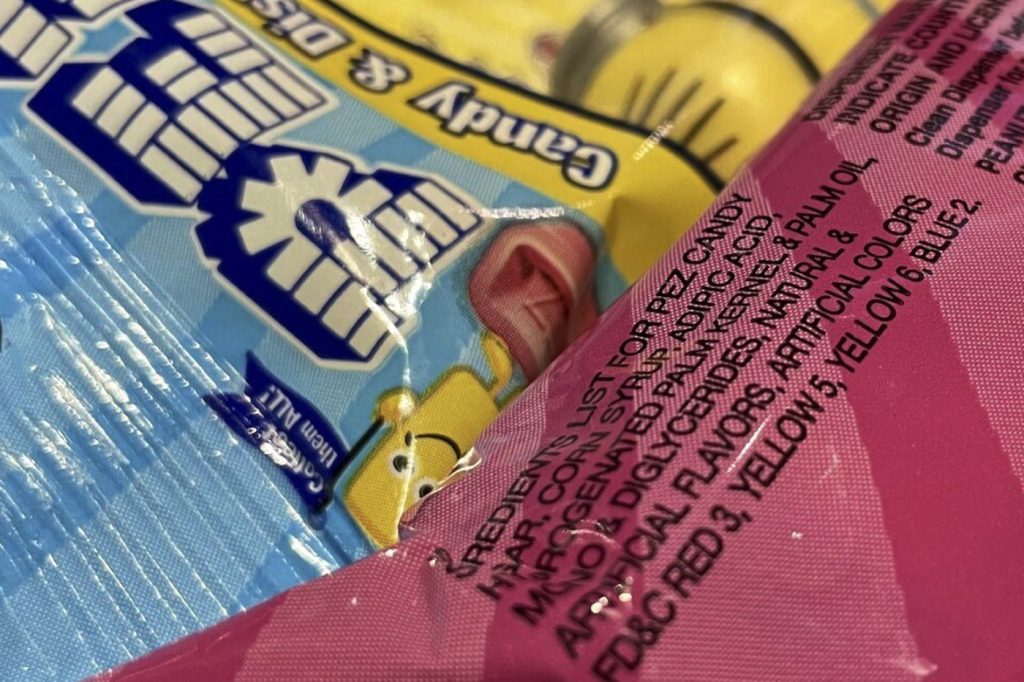McGill University professor agrees with Health Canada on Red 3 safety but still calls for ban

A synthetic food colouring recently banned from the U.S. food supply will remain available in Canada, where Health Canada has deemed it to pose no health risk to the general population.
With the latest decision by the U.S. Food and Drug Administration (FDA), Canada stands out as a special case when it comes to the food additive known as Red 3, whose use in foods is also restricted in Europe, Australia and New Zealand.
McGill University’s Joe Schwarcz agreed with Health Canada that there is insufficient evidence to demonstrate human safety concerns, but he would still like to see the dye banned because he says it adds no nutritional value while making ultra-processed foods more appealing to consumers.
Advertisement
“The important question is this: When you add something to a food, it has to be to provide some benefit, beyond making something more appealing,” said Schwarcz, director of McGill University’s Organization for Science and Society.
He said there are many natural alternatives without the fear of toxicity, such as beet juice extract and anthocyanins extracted from berries.
Also known as erythrosine or FD&C Red No. 3, the dye is primarily used in treats, including candy, cakes, cookies, and frostings, to give foods and beverages a cherry red color.
The FDA banned the dye because of a cancer risk, noting that two studies showed it caused cancer in lab rats with a “rat-specific hormonal mechanism” that does not exist in humans.
She said the measure was a “matter of law” because a legal provision requires her to ban food additives known to cause cancer in humans or animals.
Advertisement
More studies needed
Waliul Khan, a scientist at McMaster University, says that while some effects in rats may not translate to humans, he believes it’s worth considering findings from animal studies that point to potential safety concerns for additives that can be easily avoided.
“When there is emerging evidence that it is harmful – even in animals – why are we going to keep it in our food?” said Khan, a professor in the department of pathology and molecular medicine.
Khan said he would like to see a warning label on foods containing synthetic dyes, also expressing concern about red dye number 40, sometimes labelled Allura Red.
He said an animal study he published in 2022 found that long-term consumption of allura red can potentially trigger inflammatory bowel disease.
Advertisement
“When we gave it continuously to a mouse for 12 weeks, it caused harmful effects in the gut and increased the severity of colitis. But when we gave it once a week, we didn’t see this serious effect,” Khan said.
“Of course, there should be more studies, potentially, on the human subject.”
Two other papers published in 2023 by researchers at the University of Guelph looked at how certain dyes break down in the gut, and found they could potentially result in toxic byproducts.
Microbiologist Emma Allen-Vercoe, who was involved in both studies, said in a statement that the studies call for an update to regulations to take into account how the compounds are metabolized.
Khan said he was studying the safety of other dyes and hoped the increased attention brought by the FDA’s ban on Red 3 would spur funding for more studies. He noted the cost challenges of setting up a trial with a large sample size, as well as the ethics of trying to study in humans a substance known to harm animals.
Advertisement
Two different regulatory frameworks
Health Canada also deviates from the FDA in allowing Red 3 in cosmetics – the FDA banned it from use in makeup in 1990 because of a study that found it caused cancer when ingested by rats.
Schwarcz attributes this to two very different regulatory systems, insisting that “there is actually no evidence that it would pose a danger to humans”.
Health Canada said that if new scientific data reveals a risk to human health from the use of the dye in foods or drugs, it would take action, “including, if necessary, no longer permitting its use as a colouring agent in foods and drugs.”
He described the FDA ban as a “legal requirement” triggered by the two rat studies.
Advertisement
“Studies in other animals and humans have not shown these effects, and claims that the use of this dye in foods endangers human health are not supported by the available scientific evidence,” he said in an emailed statement early Wednesday evening.
Health Canada said it reviewed a safety assessment conducted by a joint committee of the United Nations and the World Health Organization in 2018. The joint UN/WHO committee looked at studies in humans and animals and found no safety concerns for the colouring as a food additive.
–This report by La Presse Canadienne was translated by CityNews
